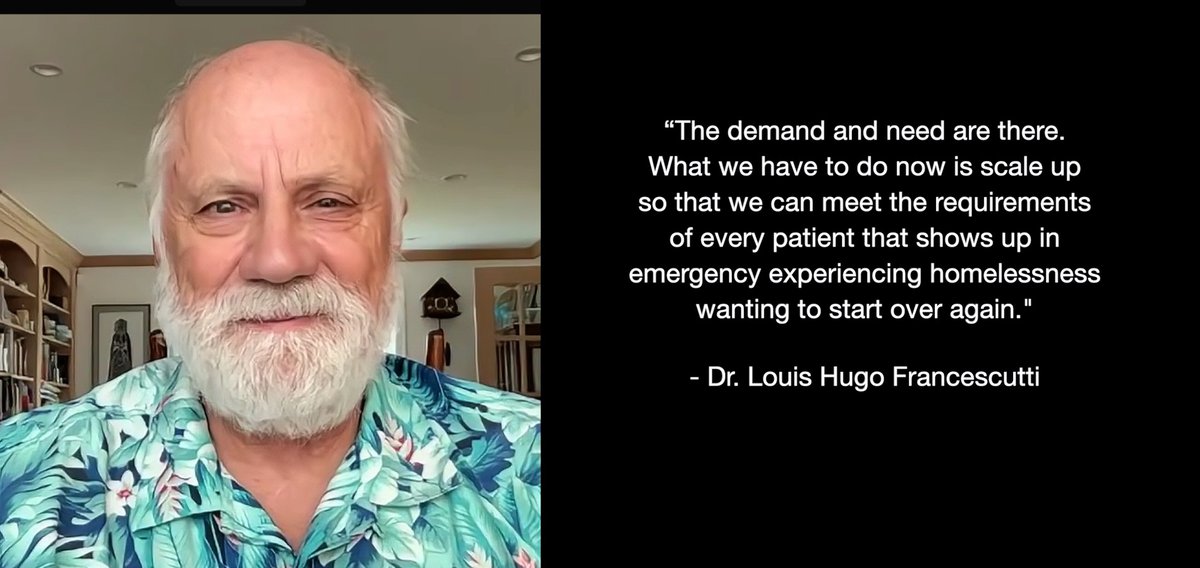Sometimes a blinding flash of the obvious takes hold and picks up steam … that’s what has happened with the Bridge Healing initiative.
Here’s the problem: when homelessness patients present to an emergency department and get treated, they get released back onto the streets, get sick again and the cycle repeats.
But what if emergency department patients experiencing homelessness could get released into an actual home where they could begin a fundamental recovery? That’s exactly what the Bridge Healing initiative is up to. Homeless patients who want to get their lives back on track are provided with a small suite at the Jasper Place Wellness Centre in Edmonton.
“The five hospital emergency departments in Edmonton are able to refer patients to Bridge Healing,” says Dr. Louis Hugo Francescutti, an emergency physician at the Royal Alexandra, an inner city hospital. “We have 36 suites that are running at the Jasper Place Wellness Centre right now. It’s running at 100% capacity. The demand and need are there, and what we have to do now is scale up so that we can meet the requirements of every patient that shows up in emergency experiencing homelessness wanting to start over again.”
The Bridge Healing program begins with intake and low-barrier requirements to get in. Once accepted, transportation is arranged and patients are given their own secure, self-contained mini-suite that’s wheelchair accessible. The journey to self-recovery begins, and it’s free of charge.
The program is unique and probably only happening in Alberta, according to Dr. Francescutti. Patients go directly from ER into Bridge Healing housing and then move on to permanent, supportive housing afterwards. “Some stays are 30 days; some may stay 60 days or longer, but the point is when they’re ready to move onto the next step, we’re there to support them. For some people it’s been very successful, and for those where it hasn’t quite met their need, we’re trying to figure out where we’re falling short so that we can redesign and add to the program.”

Some of the early pathfinders who are making the initiative a reality include the Royal Alexandra Hospital Foundation and Alberta Health Services. Also, the Alberta Medical Association has assisted with a Bridge Healing implementation manual that provides guidance to other Alberta jurisdictions that may want to implement something similar.
What are the results so far? Well, lives are already changing in a dramatic fashion.
“We just received an unsolicited testimonial from a woman,” says Dr. Francescutti. “It’s a beautiful little card she hand wrote that said she was at the end of her will to go on and then she came across Bridge Healing and thought she’d give it a chance. And now she’s living in her own apartment, she enrolled in NAIT, and she’ll be going back to school in the fall.”
What else is on the horizon for Bridge Healing? An AI chat bot is being developed for the program that will interact with patients and find out what level of service each individual needs. “It’s working. We’ve got a prototype that we’re showcasing, and it’s quite exciting to see it,” says Dr. Francescutti.
The goal, he adds, is to use artificial intelligence to better screen and better assign complexity scores. The AI chat bot can also interact in numerous languages to better assist communication with patients.
Dr. Francescutti’s hopes and aspirations for the program are clear. He wants Alberta to set the standard that no patient presenting to emergency who’s experiencing homelessness will be discharged back onto the streets.
A noble aspiration indeed!
Banner image credit: Marvin Polis
